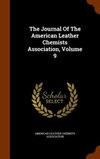Research on Sheepskin Contour Extraction Method Based on Computer Vision Measurement Technology
IF 0.5
4区 工程技术
Q4 CHEMISTRY, APPLIED
Journal of The American Leather Chemists Association
Pub Date : 2021-08-02
DOI:10.34314/jalca.v116i8.4355
引用次数: 1
Abstract
Manual trimming of sheepskin is intensive labor, and the working environment is full of rotten smells. The tannery is facing increasingly severe recruitment difficulties. This paper uses computer vision technology to study automatic recognition of sheepskin contours, which is the basis for the subsequent automatic trimming of sheepskin. After observing and analyzing the raw sheepskin images collected by an industrial array camera, a method of sheepskin contour extraction based on computer vision measurement technology is proposed in this paper. This method uses the fast Otsu threshold algorithm based on the pixel set to perform binary image segmentation. Combined with morphological processing for edge defect filling and topology analysis of boundary contour tracking algorithm to extract maximum contour information, it has a pixel-level three-dimensional de-noising preprocessing function and can accurately extract the sheepskin contour in the raw sheepskin image. The experimental results show that using the fast Otsu threshold algorithm proposed in this paper for binary segmentation to extract sheepskin contours, the detection rate is nearly 160% faster than the traditional Otsu algorithm, the edge protection is better, the error segmentation is reduced by nearly 3% and it has good anti-noise performance. It can meet the industrial production requirements of subsequent automatic cutting of sheepskin.基于计算机视觉测量技术的羊皮轮廓提取方法研究
手工修剪羊皮是一项密集劳动,工作环境充满了腐烂的气味。制革厂正面临越来越严重的招聘困难。本文利用计算机视觉技术研究羊皮轮廓的自动识别,为后续的羊皮自动修剪奠定基础。本文通过对工业阵列相机采集的原始羊皮图像进行观察和分析,提出了一种基于计算机视觉测量技术的羊皮轮廓提取方法。该方法采用基于像素集的快速Otsu阈值算法进行二值图像分割。结合形态学处理边缘缺陷填充和拓扑分析边界轮廓跟踪算法提取最大轮廓信息,具有像素级三维去噪预处理功能,能够准确提取原始羊皮图像中的羊皮轮廓。实验结果表明,采用本文提出的快速Otsu阈值算法进行二值分割提取羊皮轮廓,检测速度比传统的Otsu算法快近160%,边缘保护效果更好,分割误差降低近3%,具有良好的抗噪性能。可满足羊皮后续自动切割的工业生产要求。
本文章由计算机程序翻译,如有差异,请以英文原文为准。
求助全文
约1分钟内获得全文
求助全文
来源期刊

Journal of The American Leather Chemists Association
工程技术-材料科学:纺织
CiteScore
1.30
自引率
33.30%
发文量
29
审稿时长
3 months
期刊介绍:
The Journal of the American Leather Chemists Association publishes manuscripts on all aspects of leather science, engineering, technology, and economics, and will consider related subjects that address concerns of the industry. Examples: hide/skin quality or utilization, leather production methods/equipment, tanning materials/leather chemicals, new and improved leathers, collagen studies, leather by-products, impacts of changes in leather products industries, process efficiency, sustainability, regulatory, safety, environmental, tannery waste management and industry economics.
 求助内容:
求助内容: 应助结果提醒方式:
应助结果提醒方式:


